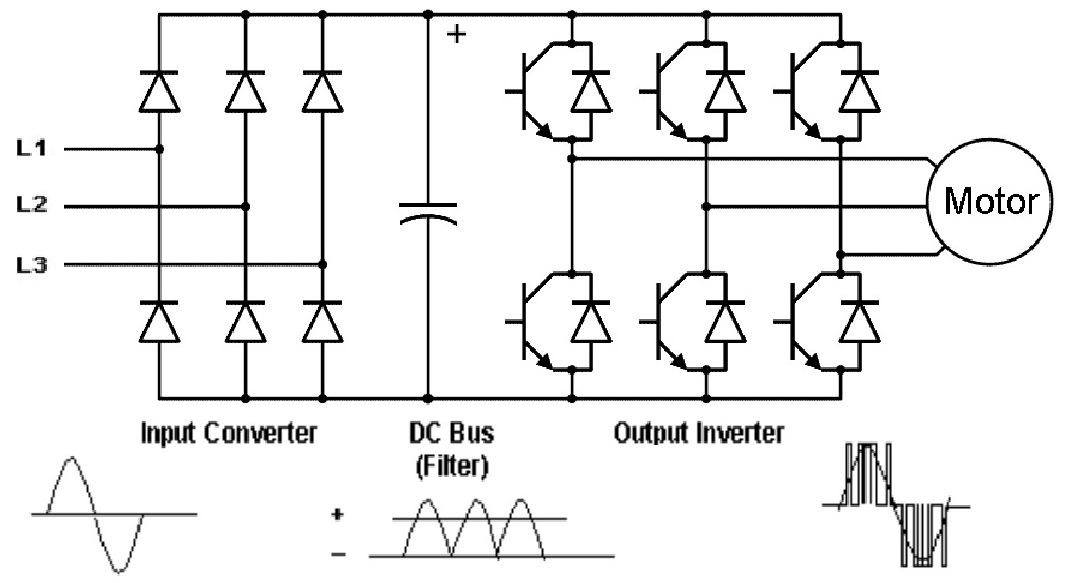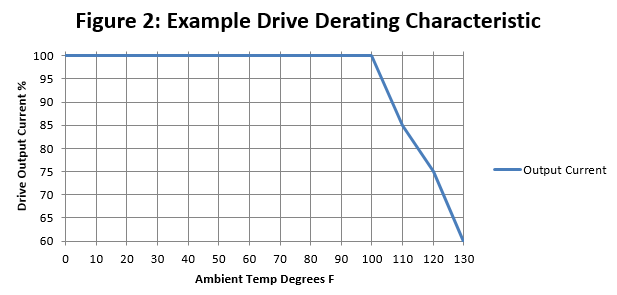
Variable frequency drives (VFDs) are used to control the speed and torque of three phase AC induction motors. VFDs also provide start, stop, acceleration, deceleration, and direction control. There are a lot of factors to take into consideration when selecting a drive. Understanding the application, control, feedback, and operational environment is crucial to ensure that your drive application solutions are the right solutions.
Variable Frequency Drives vs. Starters
Starting a motor across the line with a traditional starter can cause inrush currents that are much higher than the motor’s rated full load amps (FLA). Over time, the inrush current can break down the motor winding insulation and cause the motor to fail. If the motor’s run cycles are short, requiring frequent starting and stopping, motor failure can be particularly common.
Using a VFD to accelerate a motor gradually will greatly reduce the amount of inrush current. This allows for greater control, energy cost savings, and can also extend the life of the motor.
Operation
VFDs operate by converting the incoming AC voltage to DC voltage. The DC voltage is then controlled by electronic switching to create an AC sine wave (see Figure 1 below). Varying how often the electronic switching occurs will change the frequency of the drive’s output, and ultimately the speed of the motor. Many VFDs allow the end user to directly control the speed and direction of the motor by means of a potentiometer or keypad, or via an automated system such as a PLC or some other process controller.
Figure 1:

Drive Selection Considerations
When sizing a VFD it is important to understand the process, the operation, and the load being placed on the motor. The more information you can gather about the process the easier it will be to size and select the correct drive. Some general questions to consider are:
- What power source will be feeding the drive?
- Will the process require the motor to supply constant torque (conveyor/mixer) or variable torque (pumps/fans)?
- Will there be frequent start/stop cycles or continuous operation?
- What is the maximum current required?
- Are there any braking requirements?
- If a high inertia load requires quick deceleration, a dynamic braking resistor may be required for the application.
- Does the process require any I/O from the drive?
- Most drives have some digital I/O, but don’t forget about analog signals or encoder feedback!
- Will the drive be required to communicate with other hardware?
- Is the drive part of a large system or a stand-alone application?
General Environmental Considerations
There are several environmental considerations that must be accounted for when selecting a VFD. Ambient temperature and installation altitude are just two factors that may cause a drive to derate. Derating refers to the lower rated capacity of a drive to operate.
For example, if I have a drive that is rated for 50A output current at temperatures up to 100 degrees F, but the process is in an area with an ambient temperature of 110 degrees F, I will need to derate my drives output current (see Figure 2). By examining the graph below I can determine that my maximum output current at 110 degrees F would be 42.5A (50A*0.85).
Figure 2:

Conclusion
VFDs are a cost effective way to control a process. By controlling the output of the drive it is possible to easily control a motor’s speed and direction.
Understanding the application, control, feedback, and operational environment is crucial in sizing and selecting the correct drive.
Whether you have an AC or DC drive application, Premier Automation has solutions that will bring your equipment up-to-date with the latest technology. With a wide range of drive application knowledge and solutions, we are able to address and solve many complex problems.



